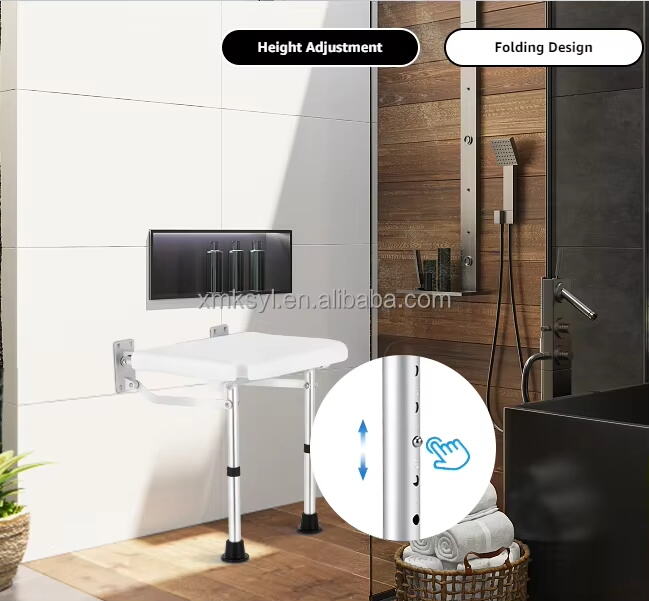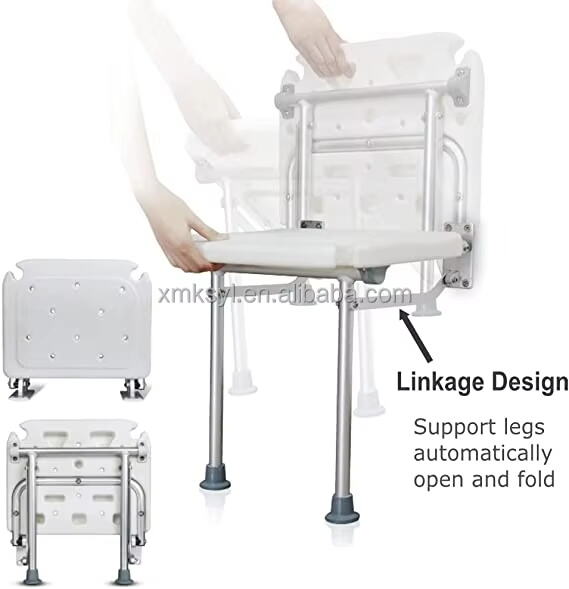Fokozott támogatás a személyes higiéne biztonságosabb rutinfeladataihoz
A napi higiéne fenntartása függetlenségben és méltóságban egy kulcsfontosságú életminőségi szempont idősek és mozgáskorlátozott személyek számára. Számosan a csúszós, vizes zuhanyzóban való állás komoly sérülési kockázatot jelenthet. Itt jönnek jól a fürdőszékek amelyek pontosan erre a célra készültek: stabil és kényelmes ülőhelyet biztosítani, lehetővé téve a biztonságos és magabiztos zuhanyzást.
A zuhanyszék nem csupán kényelem – hanem biztonsági szükségszerűség. Legyen szó magánlakásról, gondozóotthonról vagy kórházról, a fürdőszékek használata jelentősen csökkenti az esés kockázatát, és javítja a fürdőzés során nyújtott össztapasztalatot a felhasználók és gondozók számára egyaránt.
A fürdőszékek használatának főbb biztonsági előnyei
Csúszások és elesések megelőzése nedves környezetben
A fürdőszobák a háztartásokban a balesetek egyik leggyakoribb helyszínei, különösen az idősebbek vagy fogyatékkal élők számára. A zuhanyozó székek használatával a felhasználók elkerülhetik, hogy hosszú ideig álljanak csúszós felületen. A zuhanyozó szék gumi lábai és stabil kerete biztosítják a szükséges stabilitást, jelentősen csökkentve a veszélyes csúszások valószínűségét.
Ez a javított egyensúly nyugalmat nyújt nemcsak a felhasználóknak, hanem az ápolóknak is, akiknek már nem kell aggódniuk a fürdőidő alatt bekövetkező váratlan balesetek miatt.
A fizikai terhelés csökkentése a zuhanyzás során
A zuhany alatti állás megterhelő lehet azok számára, akik műtét után lábadoznak, krónikus fájdalmaktól szenvednek, vagy egyensúlyi problémákkal küzdenek. A zuhanyozó székek ideális megoldást kínálnak, mivel lehetővé teszik, hogy a felhasználó kényelmesen üljön, így energiát takaríthat meg, és csökkentheti a fizikai erőfeszítést.
Ez az ülő pozíció lehetővé teszi a hosszabb, nyugodtabb zuhanyzást, javítva ezzel a személyi higiéniát és az életminőséget anélkül, hogy a felhasználó sérülés vagy fáradtság veszélyének lenne kitéve.
Hogyan segítenek a zuhanyzószékek az önállóság megőrzésében
Egyedül való fürdés lehetőségének meghosszabbítása
Sok korlátozott mozgékonyságú ember szeretné megőrizni függetlenségét. Zuhanyzószékek használatával sokan képesek önmaguk fürdetésére állandó segítség nélkül. Ez fokozza önállóságuk és méltóságérzetük érzetét, és a fürdést kevésbé klinikusnak és személyesebbé teszi.
A családtagokból álló gondozók számára ez azt is jelenti, hogy rugalmasabbak lehetnek, és nem szükséges minden egyes fürdőzés során közvetlen segítséget nyújtani.
Átmeneti és tartós igények támogatása
Függetlenül attól, hogy a felhasználó átmeneti sérüléssel vagy hosszú távú fizikai korlátozással él, a zuhanyzószékek mind rövid-, mind hosszú távú gondoskodási igényekhez alkalmazkodnak. Számos modell könnyű, magasságállítható, és könnyen mozgatható vagy tárolható használaton kívül. Ezért kiváló befektetést jelentnek otthoni és szakmai gondozási környezetekben egyaránt.
Még azok a posztoperatív betegek is, akik csak néhány hetes támogatásra szorulnak, profitálhatnak abból, ha ezt megbízható eszközt a fürdőszobájukban használhatják.
A megfelelő kiválasztása Zuhanyszék a legnagyobb előnyök elérése érdekében
A kényelem és biztonság szempontjából fontos jellemzők
Nem minden zuhanyozószék egyforma. Kiválasztásakor fontos figyelembe venni olyan jellemzőket, mint az állítható magasság, a csúszásgátló lábak, lefolyónyílások és párnázott ülőkék. Ezek az elemek mind a kényelmet, mind a biztonságot javítják a felhasználók számára a zuhanyzás közben.
Azok számára, akik egyensúlyi vagy felsőtesti erő problémákkal küzdenek, karfák és háttámla is hasznos kiegészítők, amelyek tovább növelik a biztonságos élményt.
A dizájn összehangolása a felhasználó igényeivel
Minden felhasználónak egyedi igényei vannak, amelyeket mozgékonyságuk, erejük és a fürdőszoba elrendezése határoz meg. Például baritrikus felhasználók megerősített modelleket igényelhetnek, míg másoknak hasznos lehet kerekes szék a könnyebb mozgás érdekében. A megfelelő zuhanyozószék nemcsak a biztonságot javítja, hanem egészében is egyszerűbbé teszi a fürdés folyamatát.
Ápolók és orvosi szakemberek feladata, hogy a felhasználókat egyénileg értékeljék annak érdekében, hogy a legmegfelelőbb támogatást nyújtó széket válasszák ki.

További szempontok a Zuhanyszék Használat
Rendszeres tisztítás és karbantartás
A higiéne kritikus fontosságú minden segédeszközzel történő fürdőszobai használat során. A zuhanykéket enyhe fertőtlenítőszerekkel kell rendszeresen megtisztítani, és minden használat után alaposan szárazra törölni, hogy megelőzzék a penész, a gombásodás vagy rozsda kialakulását. A leválasztható alkatrészeket és a csúszásgátló fogantyúkat is gyakran ellenőrizni kell a megfelelő működés érdekében.
Egy jól karbantartott zuhanykártya biztosítja a biztonságot és meghosszabbítja annak használati idejét.
Megfelelő Telepítés és Beállítás
Még a legjobb zuhanykékek sem működnek hatékonyan, ha nincsenek megfelelően telepítve. Fontos, hogy a széket egy sík, stabil felületre helyezzék el, és minden állítható komponens biztonságosan rögzített legyen. Összetettebb igényekkel rendelkező felhasználók esetében falra szerelhető modellek vagy extra stabilitást nyújtó verziók lehetnek alkalmasabbak.
A szakmai tanácsadás vagy az ápolói támogatás a kezdeti beállítás során nagymértékben hozzájárulhat ahhoz, hogy később problémák ne alakuljanak ki.
Gyakori kérdések
Mi a fő előnye a zuhanykártya használatának?
Egy zuhanyzószék extra stabilitást, kényelmet és biztonságot nyújt, különösen időseknek és mozgáskorlátozott személyeknek, akik nehezen tudnak állva maradni a zuhany alatt.
Használhatók zuhanyzószékek bármilyen fürdőszobában?
Igen, a legtöbb zuhanyzószéket standard zuhanyokhoz és kádakhoz tervezték. Ugyanakkor fontos megmérni a rendelkezésre álló helyet, és olyan modellt választani, amely illeszkedik a felhasználó adott környezetéhez.
Hogyan tisztítsam meg megfelelően egy zuhanyzószéket?
A zuhanyzószékeket enyhe szappannal vagy fertőtlenítőszerrel kell megtisztítani, majd alaposan leöblíteni és megszárítani, hogy megelőzzük a baktériumfertőzést. Rendszeresen ellenőrizze a kopás vagy sérülés jeleit.
Alkalmasak a zuhanyzószékek hosszú távú használatra?
Mindenképpen. Számos modell napi használatra lett kialakítva, különösen akkor, ha tartós, rozsdamentes anyagokból készültek.
Table of Contents
- Fokozott támogatás a személyes higiéne biztonságosabb rutinfeladataihoz
- A fürdőszékek használatának főbb biztonsági előnyei
- Hogyan segítenek a zuhanyzószékek az önállóság megőrzésében
- A megfelelő kiválasztása Zuhanyszék a legnagyobb előnyök elérése érdekében
- További szempontok a Zuhanyszék Használat
- Gyakori kérdések

 EN
EN









































